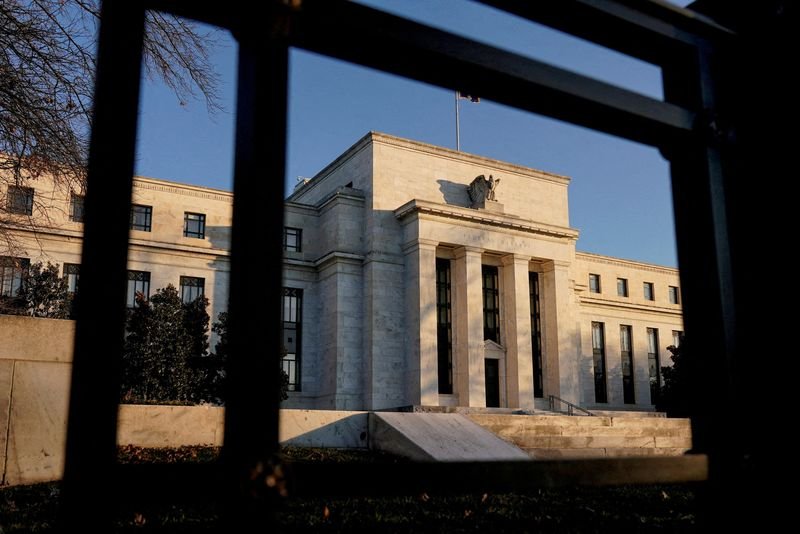The Fed’s Search for Rate Cut Indicators: Surveys and Tariffs
In the ongoing quest for insights into potential interest rate cuts, the Federal Reserve is navigating a complex landscape influenced by economic surveys and tariff pressures. Understanding these factors can provide valuable context for market participants and policymakers alike.
Economic Surveys as a Tool for Insight
Economic surveys are critical tools for gauging consumer and business sentiment. These surveys provide a snapshot of economic conditions, revealing how individuals and organizations are feeling about the future. By analyzing responses from these surveys, the Federal Reserve can derive insights into spending trends, hiring intentions, and overall economic health.
In recent months, the responses from various surveys have painted a mixed picture. On one hand, some surveys indicate confidence among consumers, hinting at potential growth in spending. On the other hand, other data points reflect uncertainty and caution, suggesting that many are hesitant to engage in large purchases. This dichotomy complicates the Fed’s ability to formulate a cohesive monetary policy strategy.
The Influence of Tariffs and Trade Policies
Tariffs play a significant role in shaping the economic landscape, affecting everything from prices to supply chains. As companies navigate these duties, their decisions can impact broader economic trends, which in turn influence the Fed’s objectives. The potential for escalating trade tensions adds another layer of complexity, as businesses may hold back on investments in response to uncertain trade environments.
The interplay between tariffs and economic performance is particularly important as the Fed considers its approach to interest rates. Elevated tariffs may lead to increased costs for consumers and producers alike, potentially dampening economic growth. If businesses perceive tariffs as a long-term economic drag, they may be less inclined to expand, leading the Fed to reevaluate its stance on rate adjustments.
Consumer Spending and Its Economic Impact
Consumer spending remains a cornerstone of economic activity in the United States. When consumers feel secure in their financial situation, they are more likely to spend, driving growth in various sectors. Consequently, the Fed keeps a watchful eye on consumer behavior, as it often correlates with economic stability.
Recent trends show fluctuations in consumer spending, influenced by factors such as inflation and wage growth. While some reports suggest resilience among consumers, others highlight hesitance, particularly among lower-income households facing rising costs. This divergence is essential for the Fed as it assesses whether the current interest rates support or hinder economic growth.
Employment Rates and Wage Growth
Employment metrics are another vital component of the Fed’s assessment. Low unemployment rates typically signal a healthy job market. However, the quality of employment and wage growth are equally paramount. Wage increases can fuel consumer spending, which, in turn, promotes overall economic health.
The Fed closely monitors labor market dynamics, including job creation and wage changes. If wages rise in tandem with employment, it could indicate a thriving economy, prompting considerations for adjusting interest rates. Conversely, stagnant wages amidst low unemployment may raise red flags, signaling deeper issues within the economy that could warrant caution in rate policy.
Inflation and Future Projections
Inflation remains a pivotal concern for the Federal Reserve, with rising prices often influencing its decisions. When inflation exceeds targeted levels, it can prompt the Fed to elevate interest rates to stabilize the economy. Conversely, if inflation remains subdued, there may be more room for rate cuts to stimulate economic activity.
The Fed analyzes various inflation indicators, including consumer price index (CPI) data and core inflation metrics. These indicators help establish whether current economic conditions justify a more aggressive or cautious approach to interest rates. As economic indicators fluctuate, the Fed remains vigilant in its analysis, continuously reassessing its strategies in light of new data.
The Complex Interplay of Economic Indicators
The challenge for the Federal Reserve lies in synthesizing these diverse economic indicators into a cohesive strategy. Surveys, tariffs, consumer behavior, employment figures, and inflation all intertwine, creating a complex framework within which the Fed must operate.
Navigating this landscape requires a nuanced understanding of economic fundamentals, as the implications of any rate change can reverberate throughout the economy. By remaining attuned to the shifts in these indicators, the Fed can better position itself to respond to evolving market conditions and make informed decisions regarding interest rates.
In summary, the Federal Reserve’s investigation of potential rate cuts is influenced by an array of interconnected factors, including economic surveys and tariff impacts. By closely monitoring these elements, the Fed aims to foster a stable economic environment while addressing challenges that may arise in the future. Understanding these dynamics is crucial for anyone engaged in economic discussions or financial markets.
